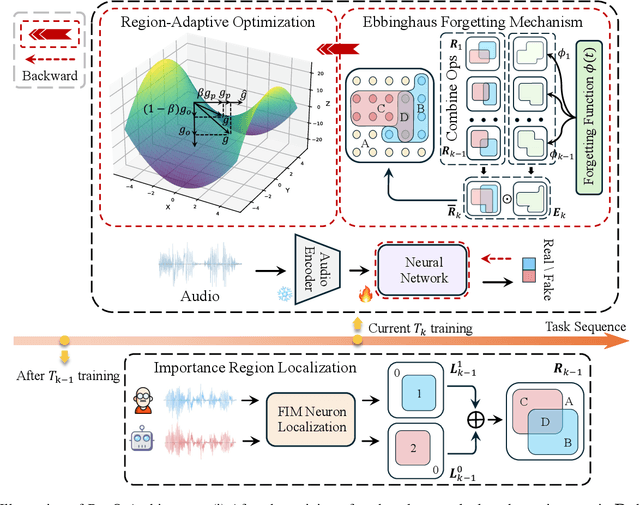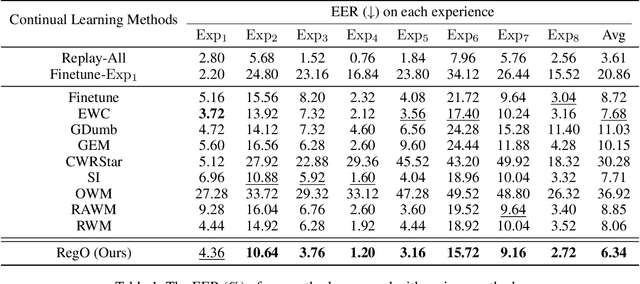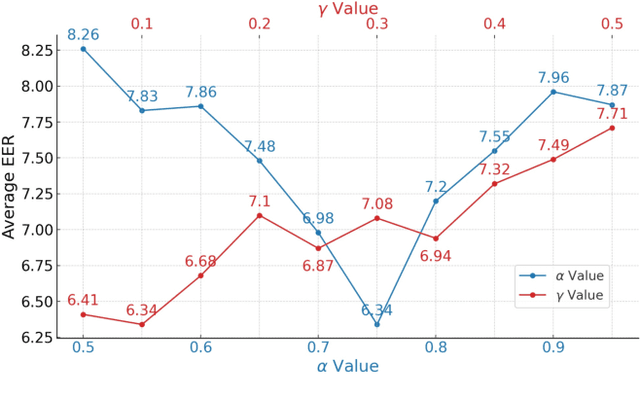Chenglong Wang
Are We There Yet? Unraveling the State-of-the-Art Graph Network Intrusion Detection Systems
Mar 26, 2025Abstract:Network Intrusion Detection Systems (NIDS) are vital for ensuring enterprise security. Recently, Graph-based NIDS (GIDS) have attracted considerable attention because of their capability to effectively capture the complex relationships within the graph structures of data communications. Despite their promise, the reproducibility and replicability of these GIDS remain largely unexplored, posing challenges for developing reliable and robust detection systems. This study bridges this gap by designing a systematic approach to evaluate state-of-the-art GIDS, which includes critically assessing, extending, and clarifying the findings of these systems. We further assess the robustness of GIDS under adversarial attacks. Evaluations were conducted on three public datasets as well as a newly collected large-scale enterprise dataset. Our findings reveal significant performance discrepancies, highlighting challenges related to dataset scale, model inputs, and implementation settings. We demonstrate difficulties in reproducing and replicating results, particularly concerning false positive rates and robustness against adversarial attacks. This work provides valuable insights and recommendations for future research, emphasizing the importance of rigorous reproduction and replication studies in developing robust and generalizable GIDS solutions.
Towards Understanding Graphical Perception in Large Multimodal Models
Mar 13, 2025Abstract:Despite the promising results of large multimodal models (LMMs) in complex vision-language tasks that require knowledge, reasoning, and perception abilities together, we surprisingly found that these models struggle with simple tasks on infographics that require perception only. As existing benchmarks primarily focus on end tasks that require various abilities, they provide limited, fine-grained insights into the limitations of the models' perception abilities. To address this gap, we leverage the theory of graphical perception, an approach used to study how humans decode visual information encoded on charts and graphs, to develop an evaluation framework for analyzing gaps in LMMs' perception abilities in charts. With automated task generation and response evaluation designs, our framework enables comprehensive and controlled testing of LMMs' graphical perception across diverse chart types, visual elements, and task types. We apply our framework to evaluate and diagnose the perception capabilities of state-of-the-art LMMs at three granularity levels (chart, visual element, and pixel). Our findings underscore several critical limitations of current state-of-the-art LMMs, including GPT-4o: their inability to (1) generalize across chart types, (2) understand fundamental visual elements, and (3) cross reference values within a chart. These insights provide guidance for future improvements in perception abilities of LMMs. The evaluation framework and labeled data are publicly available at https://github.com/microsoft/lmm-graphical-perception.
Uncovering inequalities in new knowledge learning by large language models across different languages
Mar 06, 2025Abstract:As large language models (LLMs) gradually become integral tools for problem solving in daily life worldwide, understanding linguistic inequality is becoming increasingly important. Existing research has primarily focused on static analyses that assess the disparities in the existing knowledge and capabilities of LLMs across languages. However, LLMs are continuously evolving, acquiring new knowledge to generate up-to-date, domain-specific responses. Investigating linguistic inequalities within this dynamic process is, therefore, also essential. In this paper, we explore inequalities in new knowledge learning by LLMs across different languages and four key dimensions: effectiveness, transferability, prioritization, and robustness. Through extensive experiments under two settings (in-context learning and fine-tuning) using both proprietary and open-source models, we demonstrate that low-resource languages consistently face disadvantages across all four dimensions. By shedding light on these disparities, we aim to raise awareness of linguistic inequalities in LLMs' new knowledge learning, fostering the development of more inclusive and equitable future LLMs.
Boosting Text-To-Image Generation via Multilingual Prompting in Large Multimodal Models
Jan 13, 2025Abstract:Previous work on augmenting large multimodal models (LMMs) for text-to-image (T2I) generation has focused on enriching the input space of in-context learning (ICL). This includes providing a few demonstrations and optimizing image descriptions to be more detailed and logical. However, as demand for more complex and flexible image descriptions grows, enhancing comprehension of input text within the ICL paradigm remains a critical yet underexplored area. In this work, we extend this line of research by constructing parallel multilingual prompts aimed at harnessing the multilingual capabilities of LMMs. More specifically, we translate the input text into several languages and provide the models with both the original text and the translations. Experiments on two LMMs across 3 benchmarks show that our method, PMT2I, achieves superior performance in general, compositional, and fine-grained assessments, especially in human preference alignment. Additionally, with its advantage of generating more diverse images, PMT2I significantly outperforms baseline prompts when incorporated with reranking methods. Our code and parallel multilingual data can be found at https://github.com/takagi97/PMT2I.
Region-Based Optimization in Continual Learning for Audio Deepfake Detection
Dec 16, 2024



Abstract:Rapid advancements in speech synthesis and voice conversion bring convenience but also new security risks, creating an urgent need for effective audio deepfake detection. Although current models perform well, their effectiveness diminishes when confronted with the diverse and evolving nature of real-world deepfakes. To address this issue, we propose a continual learning method named Region-Based Optimization (RegO) for audio deepfake detection. Specifically, we use the Fisher information matrix to measure important neuron regions for real and fake audio detection, dividing them into four regions. First, we directly fine-tune the less important regions to quickly adapt to new tasks. Next, we apply gradient optimization in parallel for regions important only to real audio detection, and in orthogonal directions for regions important only to fake audio detection. For regions that are important to both, we use sample proportion-based adaptive gradient optimization. This region-adaptive optimization ensures an appropriate trade-off between memory stability and learning plasticity. Additionally, to address the increase of redundant neurons from old tasks, we further introduce the Ebbinghaus forgetting mechanism to release them, thereby promoting the capability of the model to learn more generalized discriminative features. Experimental results show our method achieves a 21.3% improvement in EER over the state-of-the-art continual learning approach RWM for audio deepfake detection. Moreover, the effectiveness of RegO extends beyond the audio deepfake detection domain, showing potential significance in other tasks, such as image recognition. The code is available at https://github.com/cyjie429/RegO
LRHP: Learning Representations for Human Preferences via Preference Pairs
Oct 06, 2024



Abstract:To improve human-preference alignment training, current research has developed numerous preference datasets consisting of preference pairs labeled as "preferred" or "dispreferred". These preference pairs are typically used to encode human preferences into a single numerical value through reward modeling, which acts as a reward signal during reinforcement learning from human feedback (RLHF). However, representing these human preferences as a numerical value complicates the analysis of these preferences and restricts their broader applications other than RLHF. In contrast, in this work, we introduce a preference representation learning task that aims to construct a richer and more structured representation of human preferences. We further develop a more generalizable framework, Learning Representations for Human Preferences via preference pairs (namely LRHP), which extends beyond traditional reward modeling to tackle this task. We verify the utility of preference representations in two downstream tasks: preference data selection and preference margin prediction. Building upon the human preferences in representations, we achieve strong performance in both tasks, significantly outperforming baselines.
Data Analysis in the Era of Generative AI
Sep 27, 2024



Abstract:This paper explores the potential of AI-powered tools to reshape data analysis, focusing on design considerations and challenges. We explore how the emergence of large language and multimodal models offers new opportunities to enhance various stages of data analysis workflow by translating high-level user intentions into executable code, charts, and insights. We then examine human-centered design principles that facilitate intuitive interactions, build user trust, and streamline the AI-assisted analysis workflow across multiple apps. Finally, we discuss the research challenges that impede the development of these AI-based systems such as enhancing model capabilities, evaluating and benchmarking, and understanding end-user needs.
NDP: Next Distribution Prediction as a More Broad Target
Aug 30, 2024



Abstract:Large language models (LLMs) trained on next-token prediction (NTP) paradigm have demonstrated powerful capabilities. However, the existing NTP paradigm contains several limitations, particularly related to planned task complications and error propagation during inference. In our work, we extend the critique of NTP, highlighting its limitation also due to training with a narrow objective: the prediction of a sub-optimal one-hot distribution. To support this critique, we conducted a pre-experiment treating the output distribution from powerful LLMs as efficient world data compression. By evaluating the similarity between the $n$-gram distribution and the one-hot distribution with LLMs, we observed that the $n$-gram distributions align more closely with the output distribution of LLMs. Based on this insight, we introduce Next Distribution Prediction (NDP), which uses $n$-gram distributions to replace the one-hot targets, enhancing learning without extra online training time. We conducted experiments across translation, general task, language transfer, and medical domain adaptation. Compared to NTP, NDP can achieve up to +2.97 COMET improvement in translation tasks, +0.61 average improvement in general tasks, and incredible +10.75 average improvement in the medical domain. This demonstrates the concrete benefits of addressing the target narrowing problem, pointing to a new direction for future work on improving NTP.
Utilizing Speaker Profiles for Impersonation Audio Detection
Aug 30, 2024



Abstract:Fake audio detection is an emerging active topic. A growing number of literatures have aimed to detect fake utterance, which are mostly generated by Text-to-speech (TTS) or voice conversion (VC). However, countermeasures against impersonation remain an underexplored area. Impersonation is a fake type that involves an imitator replicating specific traits and speech style of a target speaker. Unlike TTS and VC, which often leave digital traces or signal artifacts, impersonation involves live human beings producing entirely natural speech, rendering the detection of impersonation audio a challenging task. Thus, we propose a novel method that integrates speaker profiles into the process of impersonation audio detection. Speaker profiles are inherent characteristics that are challenging for impersonators to mimic accurately, such as speaker's age, job. We aim to leverage these features to extract discriminative information for detecting impersonation audio. Moreover, there is no large impersonated speech corpora available for quantitative study of impersonation impacts. To address this gap, we further design the first large-scale, diverse-speaker Chinese impersonation dataset, named ImPersonation Audio Detection (IPAD), to advance the community's research on impersonation audio detection. We evaluate several existing fake audio detection methods on our proposed dataset IPAD, demonstrating its necessity and the challenges. Additionally, our findings reveal that incorporating speaker profiles can significantly enhance the model's performance in detecting impersonation audio.
Data Formulator 2: Iteratively Creating Rich Visualizations with AI
Aug 28, 2024



Abstract:To create rich visualizations, data analysts often need to iterate back and forth among data processing and chart specification to achieve their goals. To achieve this, analysts need not only proficiency in data transformation and visualization tools but also efforts to manage the branching history consisting of many different versions of data and charts. Recent LLM-powered AI systems have greatly improved visualization authoring experiences, for example by mitigating manual data transformation barriers via LLMs' code generation ability. However, these systems do not work well for iterative visualization authoring, because they often require analysts to provide, in a single turn, a text-only prompt that fully describes the complex visualization task to be performed, which is unrealistic to both users and models in many cases. In this paper, we present Data Formulator 2, an LLM-powered visualization system to address these challenges. With Data Formulator 2, users describe their visualization intent with blended UI and natural language inputs, and data transformation are delegated to AI. To support iteration, Data Formulator 2 lets users navigate their iteration history and reuse previous designs towards new ones so that they don't need to start from scratch every time. In a user study with eight participants, we observed that Data Formulator 2 allows participants to develop their own iteration strategies to complete challenging data exploration sessions.
 Add to Chrome
Add to Chrome Add to Firefox
Add to Firefox Add to Edge
Add to Edge